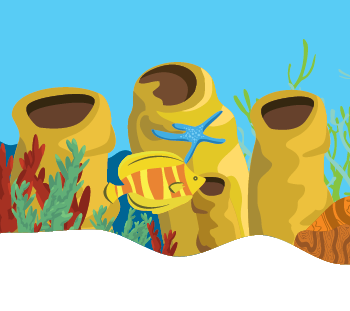CORAL REEFS
Coral reefs are warm, clear, shallow ocean habitats. In the reefs, tiny animals called polyps live in colonies. When coral polyps die, they leave behind a hard, stone-like structure made of limestone. They can be red, blue, pink and many other colours.
Sponges, fish (like blacktip reef sharks, groupers, clownfish, eels, parrotfish, snapper, and scorpionfish), jellyfish, anemones, sea stars, crabs, shrimp, and lobsters, turtles, sea snakes, snails, and octopuses also live in the reef habitat, so they are really important for sea life.
There are two types of coral: hard coral and soft coral. Hard corals (like brain coral and Elkhorn coral) have hard limestone skeletons. Soft corals (like sea fingers and sea whips) do not make reefs. Coral reefs live in shallow, warm water, usually near land, and mostly in the tropics.
There are coral reefs off the eastern coast of Africa, off the southern coast of India, in the Red Sea, and off the coasts of the northeast and northwest Australia and on to Polynesia. There are also coral reefs off the coast of Florida, USA, to the Caribbean, and down to Brazil. The Great Barrier Reef in Australia is the largest coral reef in the world. It is over 2,000 kilometres long.
Today, many coral reefs are dying. Major threats to coral reefs are water pollution, buildings by the coast and hunting.

